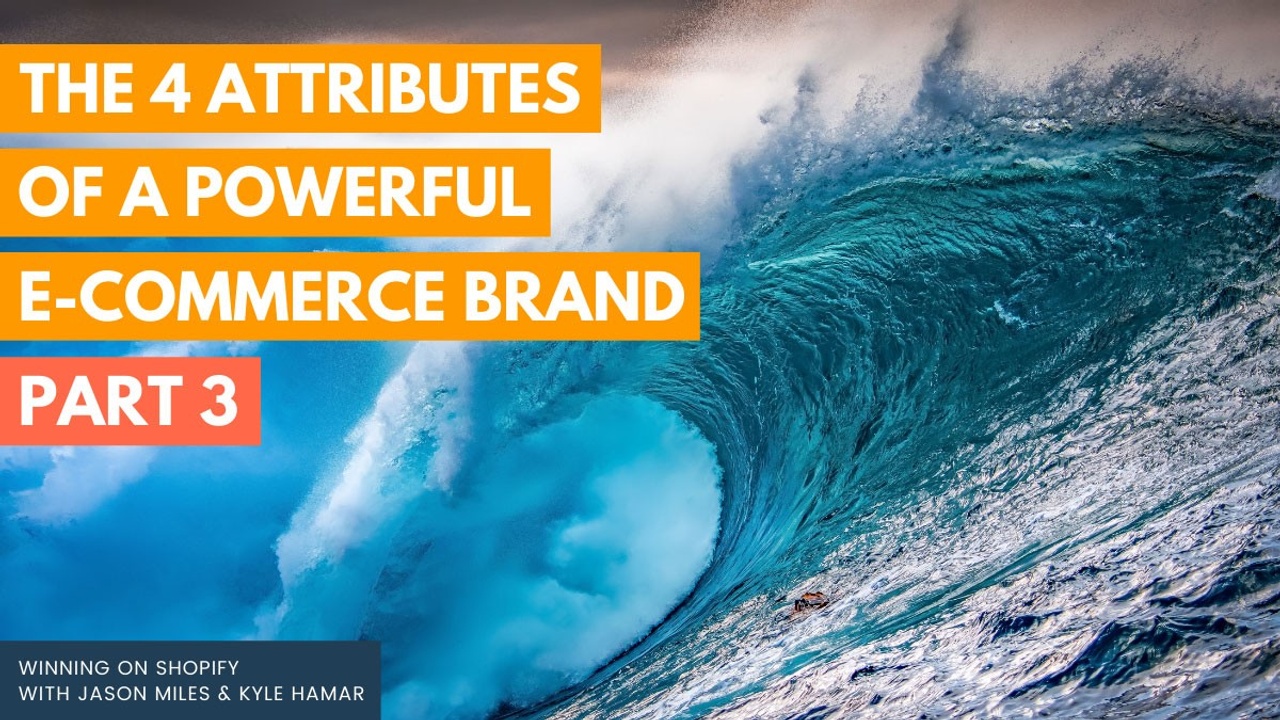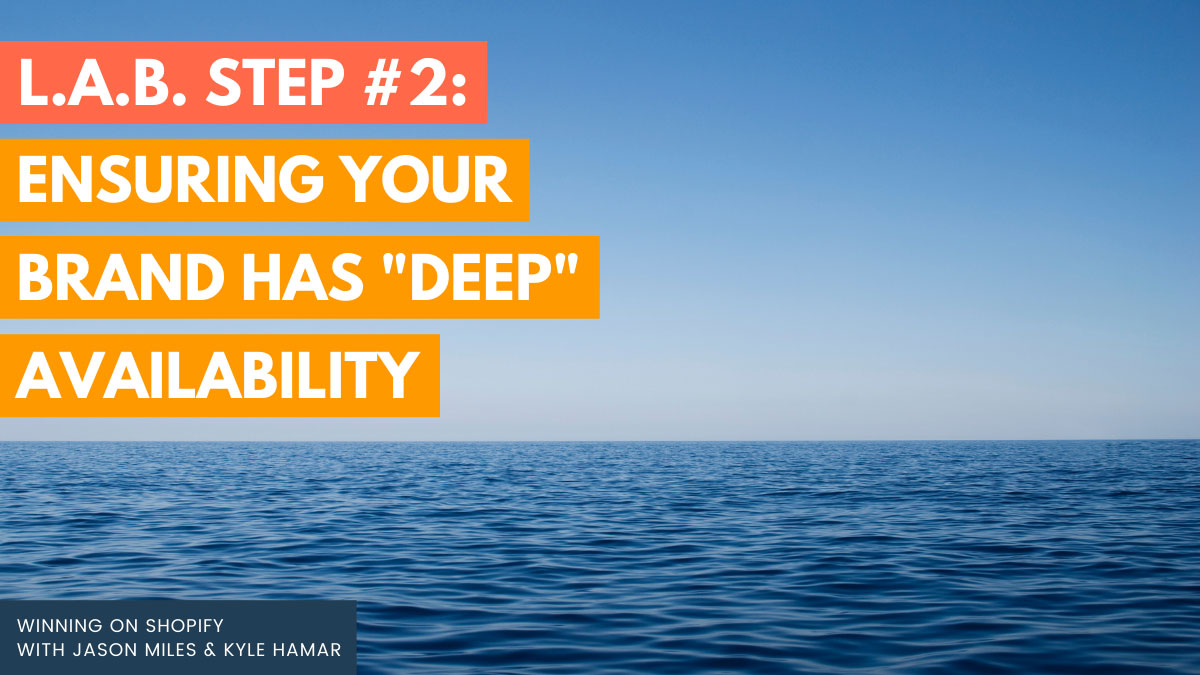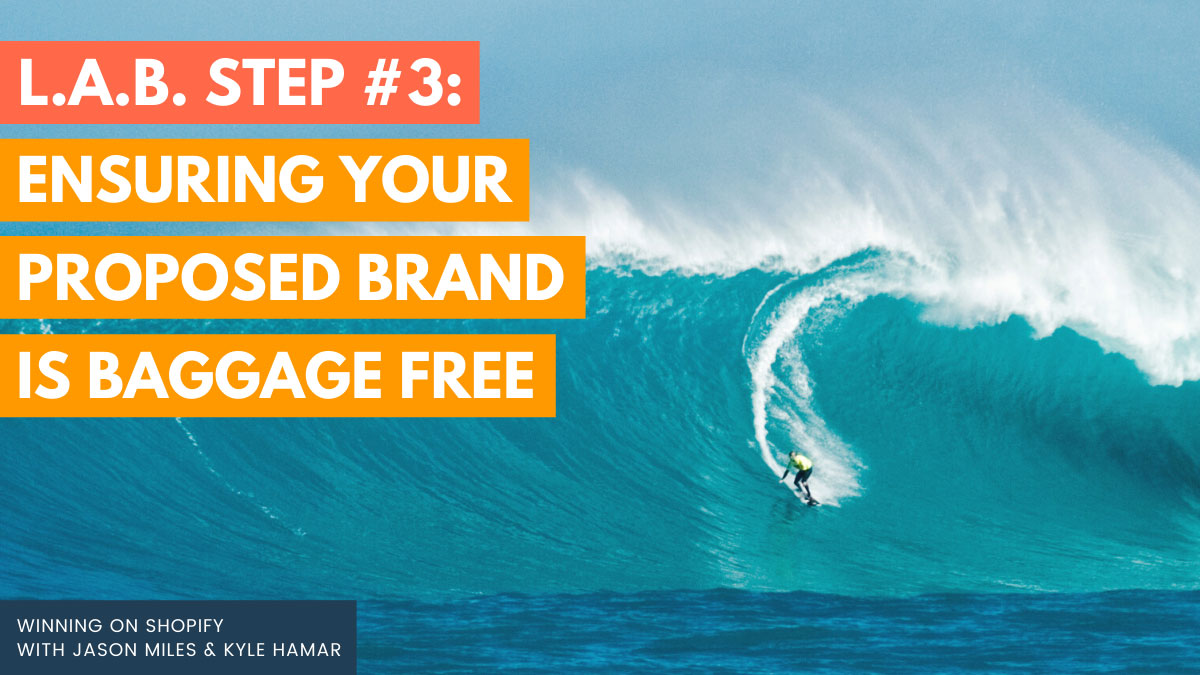The 4-Attributes Of A Powerful E-commerce Brand (Part Three)

Series Overview: There are the 4 attributes of a powerful e-commerce brand. In the first article in this series, I described the invisible aspects of a powerful e-commerce brand. In the second article in the series, I described the 6 visible aspects of a powerful e-commerce brand including the most important aspect - the name. But choosing names can be complicated by 3 primary factors, which leads us to today's topic. (Please note though, I am not an attorney, and this information should be taken as general educational information, not legal advice).
In this article, we'll describe what I call the Brand L.A.B. ... asking the question:
- Is it Legal?
- Is it Availability?
- Is it Baggage Free?
Why is creating a brand so powerful - and creating an e-commerce brand in particular so incredibly cool? Here is a short list:
- Anyone can make a brand. There are no rules about who can make them.
- They are easy to create - and if done properly - can be incredibly valuable.
- Brands are real intellectual property - not just creative exercises. That means they need to be registered and cared for - just like you'd care for any other asset such as a car or building.
- The tools to polish & perfect your brand have never been easier or more available to entrepreneurs. Your new brand can look as prestigious & impressive as a Fortune 500 brand from day one.
- Brands gain financial value (equity) over time if managed well. Get on Oprah's Favorite Things and your unknown, small-time brand will blow up huge - and have impressive equity and value overnight.
Warning: Because brands are "real" intellectual property and have the potential to be worth billions - they need to be properly protected. If you neglect to do proper brand management - you could miss out on all these good benefits and find yourself in legal and social messes and even in lawsuits that could cost you a fortune.

The L.A.B. Method To Ensuring Your Brand Is Well Managed:
Most of the issues and drama related to a brand center around the name you choose, so that's what we'll cover today. But these issues can also apply to the logo and graphics.
The steps to guard yourself aren't difficult, but they do end up costing some money and take some time. If you don't do them you will jeopardize everything you've built. So it's wise to ensure that you follow the L.A.B. model. Here it is.
When entrepreneurs are working on a new branding idea - and the creative Eureka! strikes - the most common thing for them to do is 2 things:
- Search on www.godaddy.com to see if the URL is available.
- Search on www.google.com to see if other companies come up when you search for the name.
These are a good start! It's a natural "first pass" to see if your idea has already been taken or not. If no one owns the URL and no other similar company comes up when you do a Google search, then you are possibly on to a good idea.
Avoid This Costly Mistake: If someone else already owns the ".com" version of the URL, then my best advice is to move on to another new idea. Don't even consider for 1 minute the idea of buying a lesser URL extension and moving forward with it. Why? Here are a whole set of reasons:
- If you buy a lesser URL extension (.io or .us) - and the company that owns the ".com" extension finds out what you're doing - they will fight you for it legally. That might include nasty legal "Cease and Desist" letters and/or legal action.
- They will also fight you on SEO and Google will be their cut-man (boxing metaphor). As a new business owner - do you really want to fight a more veteran opponent on day one - that has Google in their corner? This will happen because the other company has the .com extension, and also (very likely) content and social signals that tell Google that they are the "real deal" and you are not.
- You'll be creating confusion in the mind of the customer. Most customers learn about you and then when they want to revisit your website - they'll Google you. That is your chance to re-engage them. If they go to your .com extension rival - you'll miss out on the long-term customer value.
Avoid This 2nd Costly Mistake: The other common error enthusiastic entrepreneurs make is that they dismiss very similar brands as "different enough". The goal of a brand creator is to find a unique, memorable, and engaging name. Here is a quiz to help illustrate my point:
Question: Which Company Is The Looser In This Situation:
- Ray's Ice Cream
- Rays Ice Cream
- Rae's Ice Cream
- Raes Ice Cream
Answer: All of them - because they are not unique, therefore not memorable, therefore not engaging.
When you have a unique, memorable, and engaging name. And it is also available on Godaddy and Google. It's time to take your search to the next level.
Sidenote: If you get to this stage, then it's wise to buy the ".com" URL on Godaddy (and buy the common alternate extensions as well such as .net, .info, etc.).

L.A.B. Step #1 - Setting Up The Legal Search & Trademark Process:
Just because it's available on Godaddy and Google, doesn't mean someone else doesn't formally own the name. Maybe an older company you've never heard of before owns it - and they simply aren't operating on the Internet.
- State Level Protection: To officially determine if your new concept is legally available to you. In the United States, you do this first at your state level through the business formation process, or a DBA (doing business as) process.
- Each state generally has a website with content on how to take this step. Some even have a search function - so you can see the legal entities that have been created in your state by name. As needed, consult a competent CPA in your area. If no name is in use in your state, you'll want to establish a legal entity using that name, or a DBA (doing business as) filing.
- United States Federal Protection: The second step (in the United States) is to obtain your registered trademark. This gives you protection at a national level. If you're outside the United States, consult an industry expert in your country on exactly how these steps work in your situation.
- In the United States, you do this step via the USPTO (United States Patent & Trade Office). You can learn about that process here. I won't take the time in this article to re-state their information.
- It's important to realize this process could take 9 months to a year. It will also likely cost you close to $1,000 if you use an attorney.
- It's also important to realize that other companies can block or inquire about what you're doing (ask for more time to review your filing) to ensure your proposed Trademark doesn't conflict with their intellectual property.
- You'll end up "owning" the Trademark in an industry category, which still allows other companies to use it in unrelated business industries.
- You use the ™ symbol on your proposed brand when you are in the application process. You use the ® symbol after you have received your USPTO Trademark.
DIY Or Working With A Professional Advisor?
You'll have to decide if you want to go through the state registration and USPTO process on your own, or with an advisor such as an attorney or Certified Public Accountant. My advice is simple - do what makes you most emotionally comfortable. In my case, when I'm doing this work, I work with a CPA to do the state paperwork and I work with an Intellectual Property Attorney to do the USPTO process because it makes me sleep well at night

L.A.B. Step #2 - Ensuring Your New Brand Has "Deep" Availability:
At this point, you know you have a unique name. You know it is legally available. You know you have the URL secured from Godaddy. But you'll want to make sure it is more broadly available and if not, solve the problems that may arise. For example, you'll want to look to see if the name is available on the following websites:
- Youtube
- Snapchat
- Amazon
- Etsy
- eBay
- Any other marketplace or platform you think will be important now or in the future to the growth and success of your new brand.
What To Do If Your Name Is Taken?
If someone already owns your specific brand name on one of these platforms then you might want to investigate them a bit - to see if they are a "real" business. Maybe they are operating with the same name and haven't done the legal work necessary to protect it, but they are still a player in the space. Regardless of whether they are a real business or not - they are operating in the space - and you'll have to decide how to handle it.
Avoid This Amateur Mistake: Just because you have some claim to a name, doesn't give you the right to be a jerk. Practice being cool to any and all entrepreneurs. Work with people to sort things out professionally. Most importantly, know your legal rights and the legal rights of others before you make claims or try to tell people what they can and cannot do.
The Two Paths To Resolve Conflicting Profile Names:
Just because someone else "owns" a user name on a social or e-commerce platform doesn't mean you should avoid using the brand name if it is available to you legally. Owning a name on a social or e-commerce platform doesn't grant them any legal rights. So, if they have no other legal claim to the name - and you're confident in your ability to legally own the name, then you can take one of two paths:
- Create A Similar Name: In these situations, using a similar name is (in my view) a reasonable way to get around this issue. Add the word "team" to the beginning or end of the brand name. Add the word "official" before the brand name. Come up with some other creative way to use the primary brand word, and make it unique enough to be original on that website.
- Contact The Person & Offer To Buy It: Sometimes you'll find that the name is taken on a social site or e-commerce platform, but not actively used. In this case, you can try to reach out to the other person and offer to buy it from them. I've even had people simply give me the names - because they didn't care about it anymore and where cool people.
Each social netowrk and e-commerce site will be different and you'll probably encounter a number of weird or interesting scenarios that you have to work through creatively.

L.A.B. Step #3 - Ensuring Your Proposed Brand Is Baggage Free:
The final step in our formula is frequently overlooked, but really important. You want to make sure the name is what I call "Baggage Free". Generally you'll discover these issues using a careful Google search. But in the haste to create a new brand, sometimes entrepreneurs can overlook these issues, and it can come back to haunt them. Here is what I mean...
There are a lot of negative connotations in American society and the English language. I'm sure this is true in other countries as well and in other languages. If you don't really investigate your proposed brand name - you could end up stepping on social or grammatical landmines. That is a mistake to be avoided. What are they? Here is a partial list:
- Double meanings: Words with two meanings confuse customers. This is relatively harmless but still problematic. If a customer can't ever remember your brand name, because it means something else to them - then obviously it wasn't available in the mind of the prospect - and it's going to be nearly impossible to ever "own" the term in their mind.
- Trigger words: This is a relatively new phrase, but it has a simple meaning. There are words in English that upset certain people for certain reasons. If you use these words in your brand - you'll be agitating the segment of society that sees those words as insulting, irritating, or "wrong".
- Dog whistles: There are words that have "insider meaning" to certain groups. So, only people in that group will respond to the words in a specific way. Similar to how only a dog will respond to a dog whistle. These words or phrases are sometimes positive and sometimes negative. For example, in Seattle, the use of "12" has a specific meaning because of the Seattle Seahawks "12th man" fan terminology and rituals. Understanding if your proposed brand name might serve as a Dog Whistle to certain groups is vital.
- Folklore or Urban Legends: Believe it or not, sometimes words are tied to specific ghost stories, legends, and folklore. Doing a good Google search should reveal these issues. If your new brand is associated with a scary story, event, or tragedy, then that is probably a very bad way to start your business.
Putting It All Together: Creating intellectual property is incredibly fun! Do the work to create something unique, memorable, and legally available - and you'll have a fantastic business asset. Remember, I'm not an attorney, so if you're an entrepreneur on this journey, go beyond this article and find additional resources to help guide you. Contact a CPA and/or Intellectual Property attorney in your area and meet with them. Get their expert advice. It will be well worth it.
Get Started With More Training Now
Shopify Growth Hacking: This blog article is adapted from just one small part of the Shopify Growth Hacking Video Course. Get the full video course now - 50% savings. Or get started now by just watching the free promotional videos that are packed with great content.
Free Course - Brand Building For E-commerce: Want even more training and e-commerce branding insights? Get my latest branding course today! And for the first 25 people who sign-up, I've got a totally free Review Copy coupon for you (only available for a very limited time). All I ask in return is that you actually take the course and leave your highest and best review. Thanks in advance!
Join Our Inner Circle program: For those of you who want our personal help and support - consider joining our Inner Circle Program where we work with our most successful students. Currently, just $19 a month - the Inner Circle gives you access personal support, coaching, and more. Learn more here.
If you'd like additional training and coaching to achieve your Shopify goals, consider applying for our coaching program today!
Jason Miles

